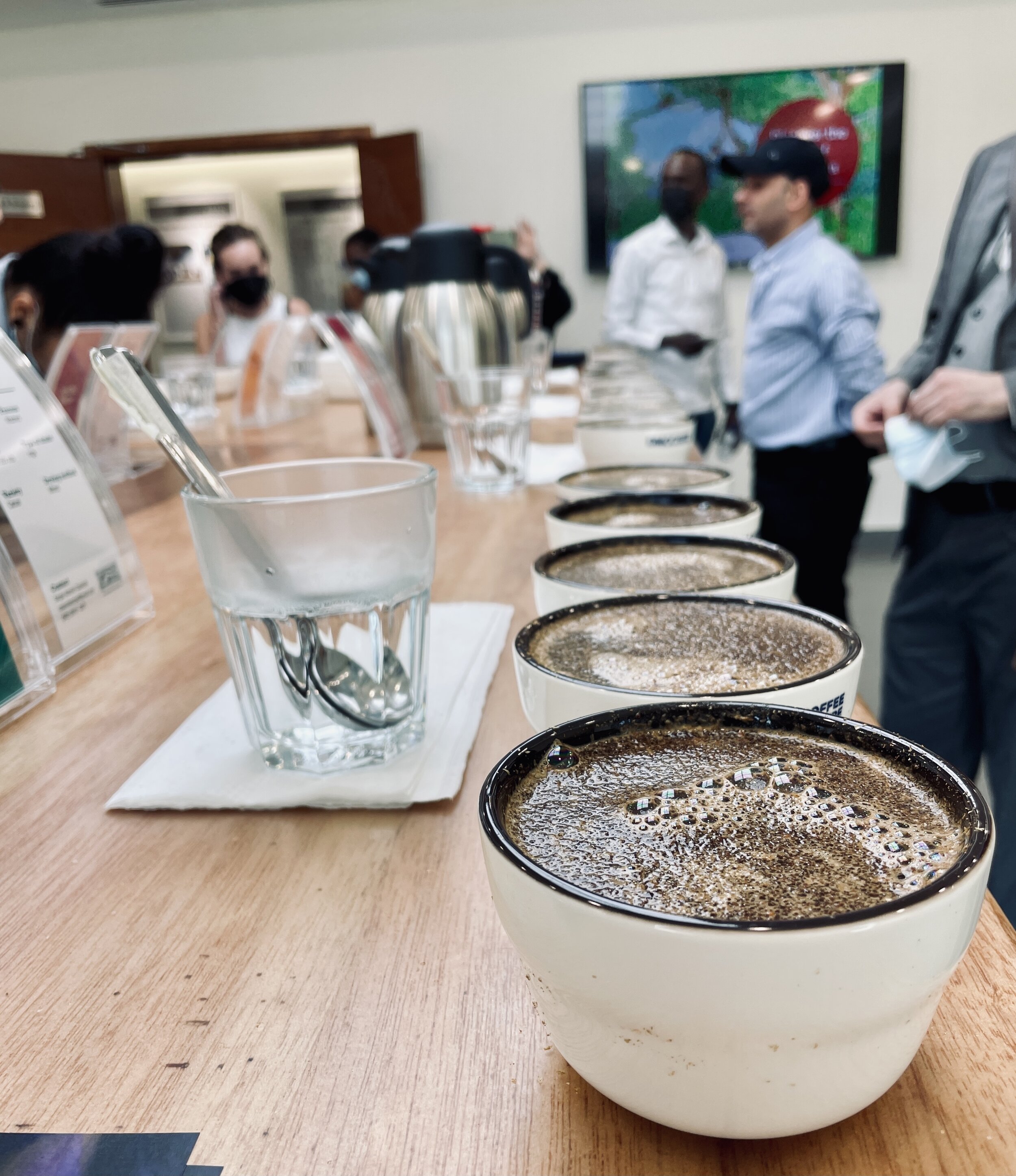Discover the Flavors of Guatemala: Event at DMCC Coffee Centre
Love the Artwork. Source: DMCC Coffee Centre
Last week, the DMCC Coffee Centre in Jebel Ali had organized an event which showcased Guatemalan coffee. The DMCC Coffee Centre is the hub for everything coffee related and as the name suggests offers a wide variety of services from storage to roasting focused on stakeholders in the coffee industry such as farmers, traders, roasters, baristas etc. This event was aimed mainly for coffee traders and distributors, to boost the trade of Guatemalan coffee in the UAE.
Why did I go to this event? Of course, I am not a coffee trader nor have I started any business related to coffee. Maybe one day, I will. Being amongst coffee professionals or any specialist, it’s natural to feel out of place sometimes, call it “Imposter Syndrome” if you will. But the whole point is to open yourself to learning from the masters of the art. I am fond of coffee and upon introducing myself as a coffee lover I was welcomed and networked with interesting individuals. I haven’t experienced Guatemalan coffee before and this was the perfect platform to know more about the coffee growing regions in this country and of course taste how different they are to each other.
Jose Bassila from the Embassy of Guatemala in the UAE made a distinctive remark at the start of the presentation: “The heart of Guatemala is it’s coffee”, this made me look forward to the rest of the event and I knew that I am going to walk out of DMCC longing for Guatemalan coffee. He spoke about Anacafe which is the Guatemalan National Coffee Association and this organization represents 125,000 coffee producers of the country. They are also responsible for the research, testing and the technicality that goes in the coffee production, processing, education and training.
Funcafe is a non-profit and the social branch of the Guatemalan coffee sector. Its vision is to promote and improve the level of human development and quality of life in the rural areas. Their prime areas of focus are promoting the production of healthy food for human consumption using local resources and sustainable practices, providing health care services, and the best part are the educational programs such as “coffee kindergarten” and literacy development amongst many others.
Looking at the coffee culture in the UAE briefly, majority of the cafes here will have a standard selection of beans available for the consumers: Brazil and Ethiopia for espresso based drinks and perhaps Columbia and Ethiopia again for filter. This needs to change and cafes here should explore more origins and keep at least one unique coffee from each continent. My ideal selection would be South American for espresso based drinks and African for filter. More on my preference of beans in another post.
What makes Guatemalan coffees so exciting? High altitude, active volcanoes, fertile soil thanks to the volcanic ash, and consistent rainfall are some of the highlights of the terroir in the 8 coffee growing regions in Guatemala. The key differences in the regions mentioned above combine to create more than 300 microclimates, meaning the climate of a smaller area will be quite different to the surrounding area.
8 Coffee Regions in Guatemala. Source: Guatemalan Coffee
98% of the coffee is shade-grown which is another reason why there is so much variety and complexity in the coffee between the respective regions. Shade-grown coffee have other advantages such as protection of the natural ecosystem and biodiversity.
The coffee from these regions are noticeably so different to each other, yet they have many similarities such as the use of wet processed Arabica beans, followed by mostly drying in the sun. The notes all ranged from low to medium acidity, largely chocolate with a hint of fruits and nuts. One region stood out which I’ll come to later.
I think cupping is a perfect exercise to practice your sensory skills and increase your knowledge about coffee. I never pass up on a chance as this can help you learn and identify the nuances between different origins, regions and varietal. Doing it with a group is interesting as you can compare notes.
The coffees laid on the table had a very delightful dry aroma when freshly ground, very pleasant to taste with no face wrenching acidity and no underlying bitterness anywhere to be found, rather this delicate chocolate like sweetness towards the end that I can imagine in a beautiful Flat White.
The two regions that I enjoyed tasting was Antigua coffee - perhaps some kind of bias there since this is the most famous region, but definitely the most balanced on the table. The San Marcos region had some floral notes in there which paired perfectly with medium acidity. Can this be a good filter? Perhaps, but no roasted coffee was available for me to try so I guess it’ll be on my coffee wish list for now and the hunt for Guatemalan coffee in the UAE cafes will continue.







